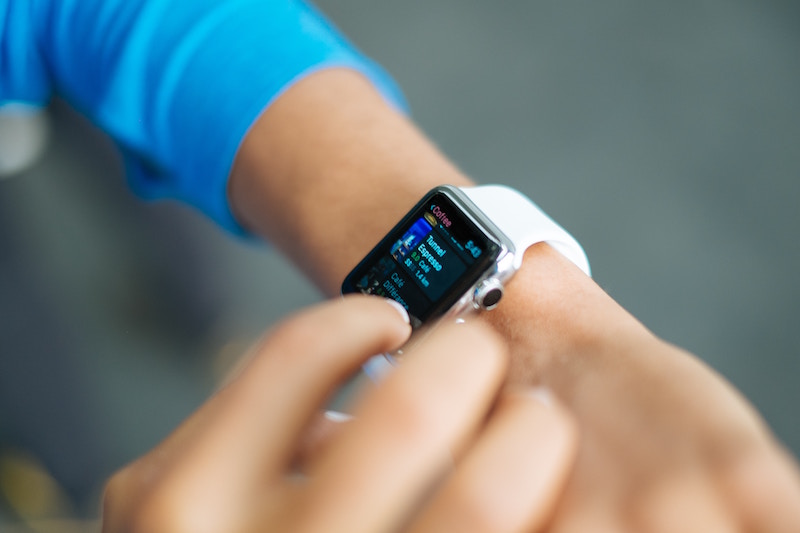
Six Thoughts on Selecting Screens for Products at the Intersection of Tactile and Digital
BY ERICK RIOS, BRIAN WONG SHUI & DEVIN MOORE
In a movement akin to Manifest Destiny, hardware (tactile product) development has increasingly been pulled into the digital frontier, creating an ever-higher demand, and expectation, for products that rely on interactive and display screens for a major portion of a device’s experience. These products bring a set of unique problems centering on their digital displays, and products in all fields can attribute much of their success or failure to a development team’s ability to choose the right screen.
As the epicenter of a device’s digital interaction a tremendous amount of care must be taken during the screen’s selection process. Compounding the selection issue is that many user interface details are subjective. This creates unique, product specific problems, which cannot be solved by technical knowledge alone. When we develop a product that is at the intersection of tactile and digital, these are the primary topics we consider to ensure recommended displays convey an experience that not only functions well, but is special and inspiring
1. The price is right. wrong.
This subject rests at the top of our list because it can be the initial, if not a primary, decision-making factor. Knowing your price range immediately narrows down selections, but choosing once you are within an acceptable range should not be guided solely by price. In most cases the price of a screen does not represent the quality during use. This goes for the cheapest AND most expensive options. Spending more money is not a guarantee that you’re developing a better user experience. The only way to truly tell what you are buying is to evaluate the screen during in use conditions. The price isn’t always right.
2. Screen specs are misleading.
Few things matter more- from a design and user experience point of view- than color, contrast, brightness, and visual viewing angle. If any one of these factors is off it can ruin an interface. Stationary devices can suffer from the use of screens intended for mobile products (and many are) because shifts in these properties can occur when the screen is not perpendicular to the user. Color shifts such as reds, an intuitive color conveying specific responses, shifting to pink or even gray can have dramatic effects on the intended purpose of a screen graphic. Errors like these are not apparent in specifications and this is why we do not rely on specifications to be the sole arbiter of performance and evaluate screen options in use conditions.
3. Pixels vs. PPI
Screen resolution is easily misinterpreted and specifications can be confusing. A high number of pixels does not always equal high quality images. Resolution depends on pixels and their relationship to physical space. This is why Pixels Per Inch (PPI) provides a more accurate measure to use for screen selection. PPI is applicable to any screen size and simplifies the selection process. We use different PPI values depending on use scenarios and proximity of the screen to the user. In general we look for at least 300 PPI for mobile phones, 200 PPI for tablets, and 100 PPI for desktop screens (and the like). This generally gives us the resolution we need to properly display our interfaces at normal working distances.
 4. Screens and touchscreens aren’t synonymous.
4. Screens and touchscreens aren’t synonymous.
Discussing screens and not mentioning touchscreens is difficult, but it is intentional here because the selection of touchscreens deserves a unique guide. The universal use and interactions with smart phones and tablets has caused the terms to become almost synonymous, causing confusion with product developers about options on products at the intersection of digital and tactile. The knee-jerk plan when developing a product with an interactive screen is to specify a touchscreen. State-of-the-art touchscreens utilize Projected Capacitance (PCAP) technology, and offers multi-touch interaction and the least impact to image quality when paired with a good screen. It’s what we are all familiar with and they work great when used as intended, but often touchscreens aren’t the best choice for many products, depending on factors like use environment, tactile feedback and manufacturing cost.
5. Understand the supply.
The life of a digital product can outlast the product lifecycle of its component screen. This is exacerbated by the rapid advancement of screen technology. We always ask suppliers for the roadmap for our preferred screen, and its current location in its product lifespan. In general the two types of screens available, industrial or consumer grade, have differing production roadmaps, which can inform a number of development, manufacturing, and service decisions. Industrial grade screens tend to have longer lifespans, robust mechanical design and rigorous certifications. Screens intended for consumer devices, with their short and unpredictable roadmaps, can be purchased in higher volumes and offer ever-improving specifications when a continuous improvement product strategy is preferred. In addition, screens may need to be replaced during a product’s lifespan, and the replacement strategy needs to be considered.
6. Tablets vs. Screens
Big Bang has had a few engagements where tablets have been considered alongside standalone screens, and we see this as a trend worth mentioning. Tablets can be used as a cost effective alternative to screens when production volumes are relatively low, and the product doesn’t require much computing power or flexibility with the screen. The disadvantage is that the display and interaction are bound by the included computing system and software, and with cheaper tablets the touch response can be less desirable.
Kablooey!
Related: Why Big Bang
